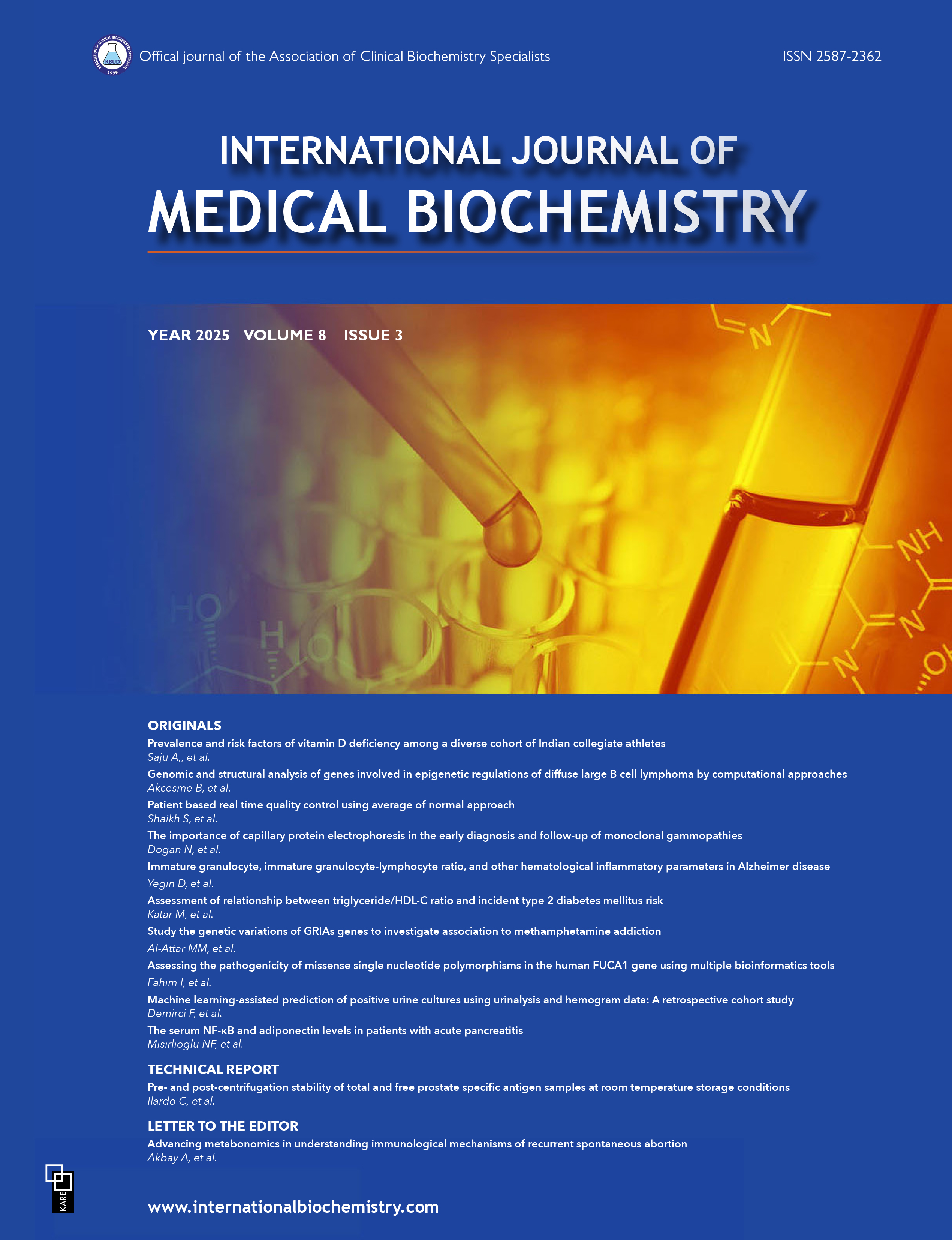The changes of oxidative stress markers and vitamin E in patients with diabetes using SGLT2 inhibitors
Banu Buyukaydin1, Omer Faruk Ozer2, Aclan Ozder3, Caner Yildiz21Department of Internal Medicine, Bezmialem Vakif University Faculty of Medicine, Istanbul, Turkiye2Department of Biochemistry, Bezmialem Vakif University Faculty of Medicine, Istanbul, Turkiye
3Department of Family Medicine, Bezmialem Vakif University Faculty of Medicine, Istanbul, Turkiye
INTRODUCTION: This study aimed to research the diversities of vitamin E and oxidative stress parameters related to sodiumglucose transport protein 2 (SGLT2) inhibitor use by type 2 diabetes mellitus (T2DM) patients.
METHODS: This observational clinical study collected data from 67 T2DM patients (55.7±9.3 years, 46% female). Vitamin E, total oxidant status (TOS), total antioxidant status (TAS), total thiol, native thiol, myeloperoxidase, and catalase levels were evaluated. The TOS/TAS ratio was calculated as the oxidative stress index. Correlations of the parameters to each other and differences based on SGLT2 inhibitor use were recorded.
RESULTS: The mean hemoglobin A1c was 7.1 (5.513.1). SGLT2 inhibitors (all combinations) were used by 25 patients (37.3%). The mean level of vitamin E was 6 (3.69.8) mg/L. There was a positive correlation between vitamin E and low-density lipoprotein cholesterol (p<0.001). While there was no significant correlation between vitamin E and all included oxidative stress parameters, the level of vitamin E was statistically lower in patients using pioglitazone (p=0.036) and statins (p<0.001). In patients using SGLT2 inhibitors, fasting glucose, triglycerides, alanine aminotransferase, and the spot urine protein/creatinine ratio were significantly lower, and the mean TAS was higher (p<0.05).
DISCUSSION AND CONCLUSION: While no differences were observed in vitamin E and other oxidative parameters related to SGLT2 inhibitor use, the increase in TAS provides motivation for further research investigating the antioxidant properties of these inhibitors.
Manuscript Language: English






